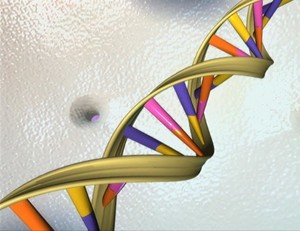Results of pivotal phase III clinical studies of candidate etanercept biosimilar SB4 and candidate infliximab biosimilar SB2 met their primary endpoints, demonstrating equivalence to the originator biological in patients with moderate to severe rheumatoid arthritis (RA) despite methotrexate therapy [1, 2].
Positive phase III results for candidate etanercept and infliximab biosimilars
Biosimilars/Research
|
Posted 21/08/2015
 0
Post your comment
0
Post your comment

The phase III, randomized, double-blind, parallel group, multicentre studies were designed to demonstrate the efficacy, safety, pharmacokinetics and immunogenicity of candidate infliximab biosimilar (SB2) from Merck and Samsung Bioepis (a Biogen and Samsung joint venture) compared to Remicade (infliximab) and their candidate etanercept biosimilar (SB4) compared to Enbrel (etanercept).
The results of the phase III trials were presented at the European League Against Rheumatism (EULAR) 2015 Congress held in Rome, Italy on 10–13 June 2015.
The primary endpoint in the two studies was the American College of Rheumatology 20% response criteria (ACR20), at Week 24 and at Week 30 of treatment, for etanercept and infliximab, respectively.
For the etanercept trial, 596 patients with moderate to severe RA despite methotrexate therapy were randomly assigned to receive weekly dose of 50 mg SB4 (N = 299) or Enbrel (N = 297) administered subcutaneously for 52 weeks. The ACR20 response rate at Week 24 in the per-protocol set was 78.1% (193/247) in the SB4 group and 80.3% (188/234) in the Enbrel group. The rate difference adjusted by region and baseline C-reactive protein was -1.67% (95% confidence interval [95% CI], -10.13% to 6.78%), which was within the predefined equivalence margin of [-15%, 15%].
For the infliximab trial, 584 patients with moderate to severe RA despite methotrexate therapy were randomized 1:1 to the two treatment arms and received either SB2 (N = 291) or Remicade (N = 293) via intravenous infusion (3 mg/kg) at Week 0, 2, 6 then every 8 weeks thereafter. The ACR20 response rate at Week 30 in the per-protocol set was 64.6% (148/229) in the SB2 group compared to 66.0% (159/241) in the Remicade group. The 95% CI of the treatment difference adjusted by region and baseline C-reactive protein was -9.41% to 4.98%, which was within the predefined equivalence margin of [-15%, 15%].
The authors concluded that both SB2 and SB4 were therefore ‘shown to be equivalent’ to their reference biologicals in terms of ACR20 response rate up to Week 24 or Week 30, for etanercept and infliximab, respectively. SB2 and SB4 were also found to be well tolerated with comparable safety profiles to Remicade and Enbrel, respectively.
Conflict of interest
The authors of the abstracts [1, 2] have received grant/research support from Samsung Bioepis or are employees of Samsung Bioepis. Some of the authors have worked as consultants for Samsung Bioepis and other pharmaceutical companies. For full details of the authors' conflicts of interest, see the abstracts [1, 2].
Editor’s comment
It should be noted that data of the studies presented in this article were published as abstracts and presented at a conference. These data and conclusions should be considered to be preliminary until published in a peer-reviewed journal.
Related articles
Phase I results for candidate adalimumab, etanercept and infliximab biosimilars
Phase I studies of infliximab and rituximab biosimilars demonstrate pharmacokinetic similarity
References
1. Choe J-Y, Prodanovic N, Niebrzydowski J, et al. A randomised, double-blind, phase III study comparing SB2, an infliximab biosimilar, to the infliximab reference product (Remicade®) in patients with moderate to severe rheumatoid arthritis despite methotrexate therapy. EULAR 2015; 10–13 June 2015; Rome, Italy.
2. Vencovský J, Sylwestrzak A, Leszczyński P, et al. A phase III randomised, double-blind clinical study comparing SB4, an etanercept biosimilar, with etanercept reference product (Enbrel®) in patients with moderate to severe rheumatoid arthritis despite methotrexate therapy (24-week results). EULAR 2015; 10–13 June 2015; Rome, Italy.
Permission granted to reproduce for personal and non-commercial use only. All other reproduction, copy or reprinting of all or part of any ‘Content’ found on this website is strictly prohibited without the prior consent of the publisher. Contact the publisher to obtain permission before redistributing.
Copyright – Unless otherwise stated all contents of this website are © 2015 Pro Pharma Communications International. All Rights Reserved.
Source: Biogen, ClinicalTrials.gov, EULAR, Merck
News
FDA approves six denosumab biosimilars
EMA recommends approval for four biosimilars targeting three therapies
General
Samsung Bioepis wins Pyzchiva case; Regeneron patent rulings threaten foreign biosimilars
Chinese biosimilars go global: growth, partnerships, and challenges
What is the future for the US biosimilar interchangeability designation

Biosimilars/Research Posted 05/06/2025
Biosimilar clinical efficacy studies: are they still necessary?

Biosimilars/Research Posted 27/05/2025
The best selling biotechnology drugs of 2008: the next biosimilars targets








Post your comment